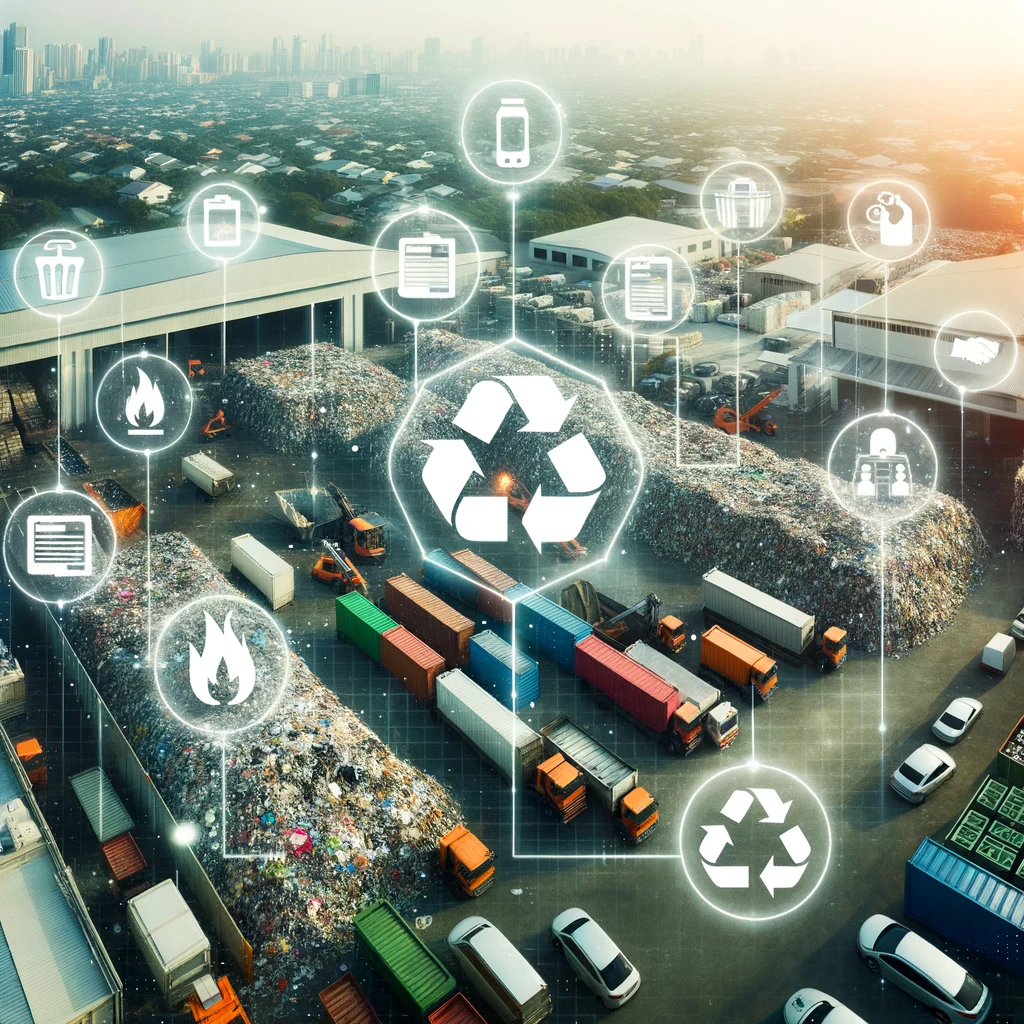The implementation of the Recycling and Waste Reduction Act 2020, prohibiting the overseas export of unprocessed waste coupled with the challenges posed by COVID-19, has spurred the transformation of local Waste Management Facilities (WMF) to handle recyclables domestically. WMFs, with their diverse operational setups, encounter distinct fire safety risks, especially with the rise of emerging hazards like Lithium-Ion Batteries. While the Fire Rescue New South Wales (FRNSW) Waste Management Guideline offers a roadmap for WMF' fire safety, a gap remains between these guidelines and the Building Code of Australia (BCA). The article underscores the need for a holistic 'Systems Approach' to fire safety, which takes into site wide considerations, internal / external waste stockpiles, the waste recycling process machinery, various stakeholder inputs and evolving fire hazards such as Lithium-Ion batteries.
In December 2020, the Australian Federal Government rolled out the Recycling and Waste Reduction Act 2020, effectively putting an end to the export of unprocessed waste overseas. The convergence of this legislation and the COVID-19 pandemic have galvanized the transformation of local Waste Management Facilities (WMF) to process and re-manufacture recyclables within Australia's shores.
WMFs differ in structure and functionality, each tailored to process diverse waste types, from household chemicals to organic refuse. These facilities, given the nature of the materials they house, face distinctive risks, particularly concerning fire safety. Emerging hazards like Lithium-Ion Batteries further amplify these challenges.
A typical modus operandi for many WMFs involves accumulating vast amounts of waste, which is then systematically sorted for recycling, disposal, or other treatments. This sorted waste remains onsite until it's either collected or undergoes additional processing. Some specialized facilities exclusively process specific waste streams, such as batteries, e-waste products, or chemical waste, each presenting its own set of fire safety and building risks.
In the context of fire safety standards for WMFs in Australia, the Fire Rescue New South Wales (FRNSW) Waste Management Guideline stands out as a principal reference. It offers Fire Engineers a blueprint for crafting fire safety strategies tailored for WMFs. However, the Fire Engineer needs to adopt a ‘Systems Approach’ to marry the FRNSW Guidelines, fire safety provisions in the Building Code of Australia (BCA) which largely applies to the building rather than the waste processing taking place and other environmental considerations imposed on the facility by the Development or Planning Consent.
The essence of crafting a robust fire safety strategy lies in a holistic 'Systems Approach'. This approach encompasses a multitude of factors including the Building Code's fire mandates, environmental protection regulations, and the operational needs of fire brigades. Given the distinctive nature of each WMF, custom fire safety strategies, moulded by the facility's operations and the waste types managed, become imperative. For instance, facilities designed to recycle Lithium-Ion Batteries or those where such batteries are wrongly disposed into normal waste streams present unique challenges.
This article delineates the 'Systems Approach' (refer to Figure 1) to tackle fire hazards in WMFs, spotlighting a comprehensive, site-wide methodology, augmented by illustrative case studies. Central to this approach is a rigorous fire hazard assessment. Collaborative consultation, spearheaded by the Fire Safety Engineer and involving all stakeholders—from the WMF operator to regulatory bodies like the Environmental Protection Agency—is essential. In addition, this Systems Approach also necessitates the adoption of techniques centred around the ISO 13001 Risk Management Framework and the Fire Safety Study methodology from the NSW HIPAP 2 (Planning NSW) Guidelines.

Figure 1. Systems approach to fire safety in waste management plants
- Australasian Fire Authorities Council, 2022. Fire safety in waste management facilities (No. 3095).
- Australian Government, 2020. Recycling and Waster Reduction Act.
- EPA Victoria, 2021. Management and storage of combustible recyclable and waster materials – guideline (No. 1667.3)
- Fire and Rescue NSW, 2020. Fire Safety in Waste Facilities.
- NSW Department of Planning, 2011. Hazardous Industry Planning Advisory Paper No. 2 (HIPAP 2) – Fire Safety Study Guidelines.
- NSW Government, 2022. Remanufacture NSW
- QLD Government, 2020. Prevention of fires in waste stock-piles.

